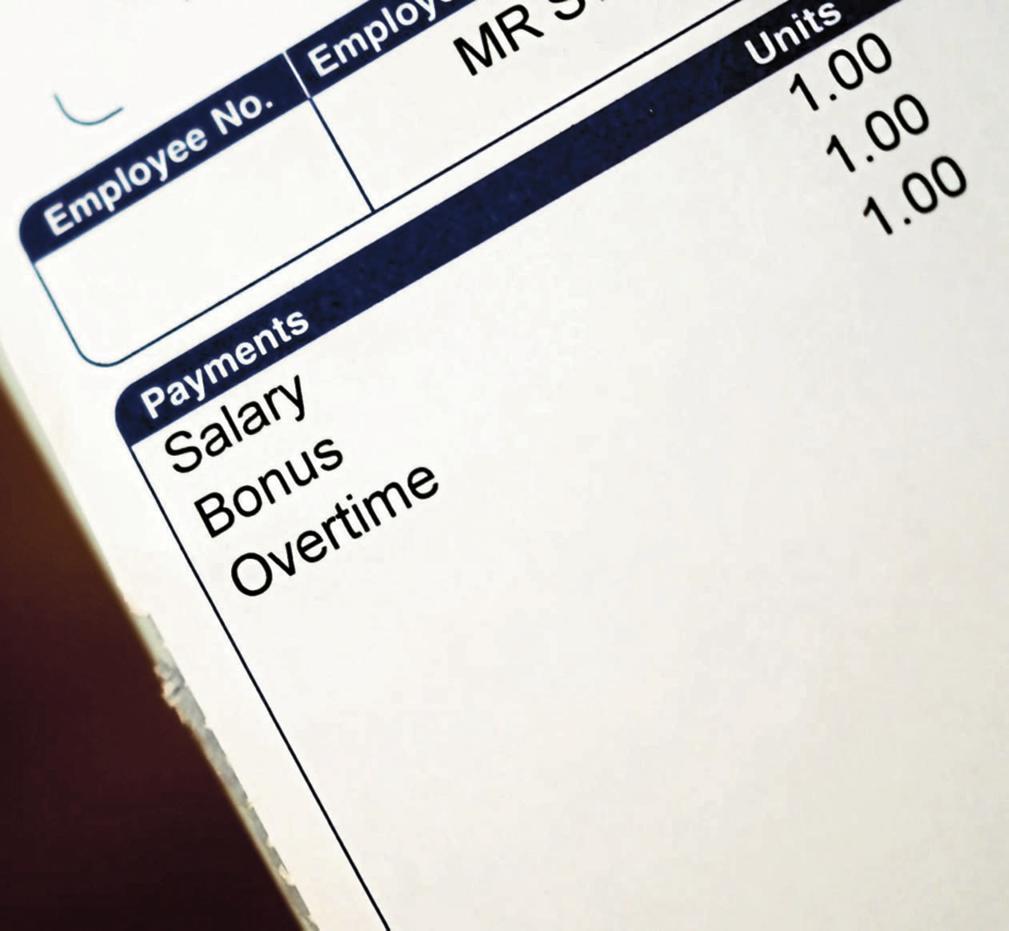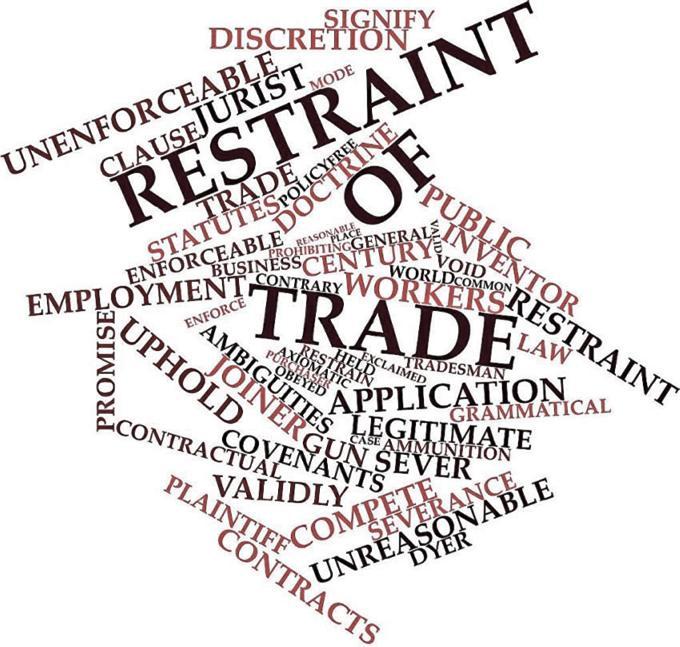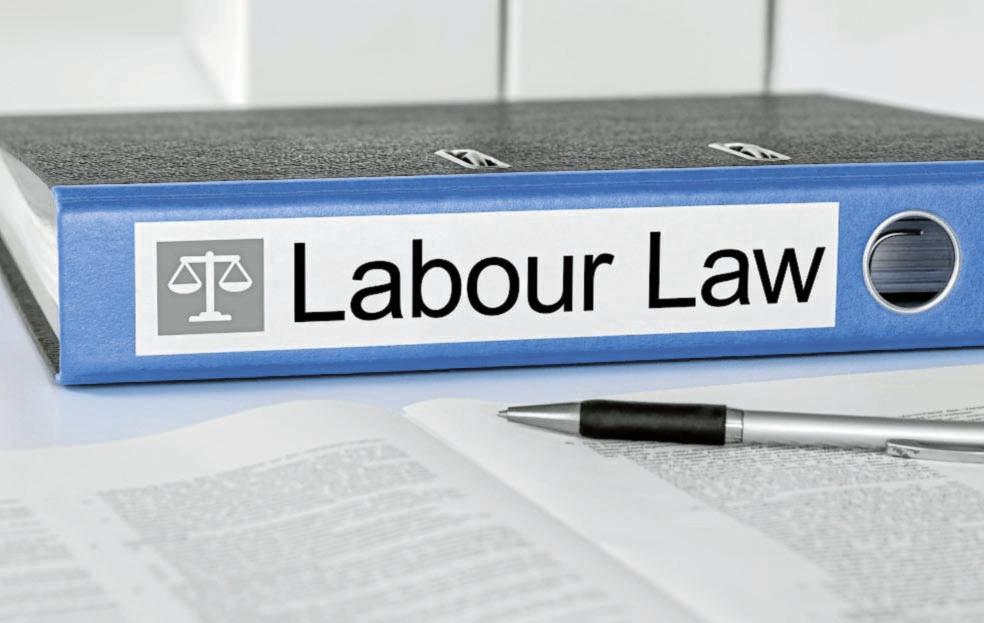Double trouble trademarks
• Volkswagen opposes GTA registration, while a rooster logo ruffles football federation’ s feathers
Tevin Jones ENS
This article discusses two recent EU judgments dealing with the issue that comes up most often in trademark law are the trademarks confusingly similar?
On the car brands front, an individual filed an application to register the trademark GTA for various goods in class 9, including electronic chips for engine controls and electronic control devices, as well as programs for data processing for controlling vehicle technology Class 12, which is for vehicles, was also covered
To the surprise of probably very few, Volkswagen filed an opposition based on their German registration for the trademark GTI in class 12 for motor vehicles and their parts
The German Patent and Trade Mark Office
The office partially upheld the opposition for the goods in classes 9 and 12 An appeal was filed
The German Patent Court
The court upheld the appeal for the goods in class 9; however, confirmed the earlier decision as regards goods in
class 12 (vehicles) The German Patent Court went through all the gears:
● Is GTI a trademark (badge of origin)?
The applicant requested evidence of use of the trademark GTI and suggested that it is descriptive of “gran turismo injection”
The court accepted that GTI is used to designate sporty cars in general; however, it felt that most consumers would, as a result of VW’ s significant use of the term GTI, regard it as a badge of origin It said that consumers are accustomed to seeing several different brands on cars, such as VW Golf and VW Polo Consumers therefore understand GTI as an independent brand
The court accepted that there had been genuine use of the trademark GTI for vehicles
● Is the trademark GTI distinctive?
The court said that GTI is not inherently distinctive because of its descriptiveness; however, it had become distinctive through VW’ s extensive use of the term
● Are the goods similar?
There was certainly no issue with class 12, vehicles and parts for vehicles these were identical, or at least highly similar The court felt that the class 9 goods were, at best, “similar to a low degree” to vehicles Consumers, said the court, are well aware that car parts are usually supplied by automotive suppliers rather than car manufacturers The court said “the functional relationship between ‘vehicles’ and the goods in class 9 of the contested trademark results in a low degree of similarity”


● Are the trademarks similar?
The court made the following findings:
* Two-thirds of the trademarks are identical the identity “relates to the beginning to which consumers pay more attention” Has any court dealing with a trademark case ever been so precise!
* The fact that the trademarks are short is irrelevant
* The trademarks have an average degree of phonetic similarity The court considered the fact that these short trademarks may not be clearly enunciated
● Is there a likelihood of confusion?
Cars are expensive and people buying them tend to be attentive when outlaying big money; however, the court said many consumers would
struggle to distinguish the trademarks GTI and GTA VW argued it has a series of trademarks GTI, GTE and GTD and suggested this would exacerbate the likelihood of confusion But the court was not convinced it said that GT is purely descriptive (Gran Turismo)
● Does GTI have a reputation?
The court ruled that GTI does not have a significant reputation It said that competitors have long been using the abbreviation for all sorts of fast cars
ROOSTER DEVICES
CROWING ROOSTERS
FFF (Fédération Française de Football)
This EU trademark opposition recently made its way up to the Court of Justice of the European Union (CJEU)
involving an application by a company called Kokito to register a Crowing Rooster Device trademark The FFF opposed the application based on its Crowing Rooster Device trademark
The opposition succeeded before the EU Intellectual Property Office (Euipo) This decision was taken up to the CJEU, which issued its judgment on January 15 2025 The FFF was successful
Here are some of the points made in the article:
● Both trademarks incorporate a “highly stylised impressionistic rooster”
● The designs are “ conceptually identical” The article says “the conceptual comparison consists in assessing whether the signs contain images with an analogous
BUSINESS LAW & TAX
New era of pay transparency
• Amendment Act compels firms to disclose remuneration metrics
Lenja Dahms-Jansen & Soraia Machado Bowmans
The Companies Amendment Act 16 of 2024 (Amendment Act) heralds a transformative era in corporate governance, significantly enhancing transparency requirements in remuneration and vertical pay-gap disclosures
The Amendment Act represents a major step towards remuneration transparency and accountability in SA
Section 30B(3) of the act mandates that public and state-owned companies disclose critical remuneration metrics, including:
● Total remuneration of the highest-paid employee;
● Total remuneration of the lowest-paid employee;
● Average total remuneration of all employees;
● Median total remuneration of all employees; and
● Ratio between the top 5% highest-paid employees and the bottom 5% lowest-paid employees
Section 30B of the act defines “total remuneration” as encompassing all salary and benefits, including employer contributions to benefit funds, as well as any short-term or long-term incentives such as share options and incentive awards
To ensure greater clarity, companies must break down total remuneration into constituent elements, reflecting its composition Generally, “total remuneration” comprises: (i) total direct remuneration (the employee’ s total guaranteed package and any short-term incentives); (ii)
Trademark troubles
CONTINUED FROM PAGE 1
semantic content In addition, account must be taken of the fact that the average consumer must, as a general rule, place his trust in the imperfect picture of the (trade) marks which he has kept in his mind
The reduction of certain features in the trademarks (like missing feet) increases the likelihood of confusion Interesting observation!
● Reviewed by
Gaelyn Scott, Head of ENS Intellectual Property Department
long-term incentives; (iii) dividends; and (iv) other amounts (such as severance payments, gratuities etc)
A strict interpretation of section 30B(3) suggests that these disclosure obligations apply at the individual company level rather than across a group of companies This could imply that only the public company itself must report on the remuneration of its directors, prescribed officers and employees, excluding subsidiary employees
However, given the overarching objectives of transparency and accountability in Part C of the Companies Act 71 of 2008 (Companies Act), there is strong policy justification for extending these obligations to subsidiaries within a corporate group, irrespective of their public interest scores
TO ENSURE GREATER CLARITY, COMPANIES MUST BREAK DOWN TOTAL REMUNERATION INTO CONSTITUENT ELEMENTS
Many public companies are holding companies with no employees The employees are employed in a service company established for the purpose of employing the employees, or in operating subsidiaries If the word “ company ” is interpreted narrowly to exclude subsidiaries, it would lead to companies easily evading their reporting obligations by ensuring all employees are employed in subsidiaries and not the public holding company Companies that attempt to bypass these requirements by structuring their workforce within subsidiaries may face shareholder scrutiny
Considering this, notwithstanding the specific wording of the new sections 30A and 30B (which, unlike other sections in the Companies Act, do not refer to a group of companies ), it would be difficult to justify a narrow interpretation of company
From a policy perspective, it would be prudent for the public entity to make the pay gap disclosures in respect of its own employees and in respect of the employees of its South African subsidiaries (such as in relation to the group of companies) It must also be borne in mind that the remuneration report must be approved annually by share-
SIZING UP SALARIES

holders, and it is possible that there could be shareholder pushback if the company were to limit its pay gap disclosures to its direct employees only
For clarity, subsidiaries incorporated under foreign laws that directly employ workers in those jurisdictions are not subject to section 30B(3) The Amendment Act is designed to address excessive remuneration and inequality within SA, and extending its provisions to international subsidiaries would not align with its intended scope
The Amendment Act adopts the definition of employee from section 213 of the Labour Relations Act 66 of 1995 (LRA) It is accordingly necessary to consider principles of labour law to form a view on which categories of workers are likely to be included and excluded from the pay gap analysis
We are of the view that the following categories of workers fall within the scope of section 30B(3):
● Indefinite employees: permanent employees engaged for an unspecified period
● Fixed-term employees: employees contracted for a specific period or project
● Full-time and part-time employees: employees working either full time or part time, whether perma-
THE AMENDMENT ACT IS DESIGNED TO ADDRESS EXCESSIVE REMUNERATION AND INEQUALITY WITHIN SA
nently or for a fixed term
● Casual employees: individuals working less than 24 hours per month
● Learners: workers under a learnership agreement as defined by the Skills Development Act 97 of 1998 (SDA) This temporary employment provides practical experience and training The SDA defines terms such as “employee” , “learner” , “learnership” and Seta (Sector Education and Training Authority) The 2018 Seta Workplace Based Learning Programme Agreement Regulations include apprenticeships, internships and candidacies Employers must comply with labour laws, establish employment agreements with learners and apply the same workplace policies as for permanent employees Employers engaging learners through a Seta are accordingly considered their employers According to case law, interns not engaged through a Seta are still regarded as employees if they contribute to the company s operations
We are of the view that the following categories of workers fall outside of the scope of section 30B(3):
● Independent contractors: individuals providing services without direct control or employment ties to the company (provided that such engagement does envisage a true independent contracting arrangement)
● Service provider employees: workers employed by third-party service providers, such as outsourced cleaning and security staff
● TES (labour broker) employees: employees engaged through temporary
The South African Reward Association (Sara) has issued a guidance note on the Amendment Act to help companies interpret and implement the remuneration disclosure requirements effectively Key observations from the Sara guidelines include:
● Broad inclusion of employees: Sara confirms that the LRA definition of “employee” is designed to cover as many individuals as possible, including learners, temporary workers and expatriates working in SA
● Sustainable reporting: Companies should ensure consistency in reporting methodologies to maintain comparability over time
● Enhanced transparency: Companies are encouraged to disclose multiple remuneration metrics to enhance stakeholder trust
/123RF SHAUNWILKINSON
employment services
The exclusion of TES employees is a sensitive point, given that they may perform similar roles to directly employed workers and there are certain provisions in the LRA which, if triggered, deem TES employees to be the employees of the client company
COMPANIES SHOULD ENSURE CONSISTENCY IN REPORTING
METHODOLOGIES TO MAINTAIN COMPARABILITY OVER TIME
However, we are of the view that, until such time as further amendments are promulgated or regulations issued, the Amendment Act does not extend the disclosure requirements to TES employees
The Amendment Act only incorporates the definition of employee from the LRA into the Companies Act This definition merely identifies who qualifies as an employee; section 213 does not specify who the employer of that employee is, nor does the LRA provide a definition of employer
Unlike the Basic Conditions of Employment Act 75 of 1997 and the Employment Equity Act 55 of 1998, the Amendment Act does not incorporate the LRA s deeming provisions , which determine whether a TES employee is considered an employee of the client company
● Reporting flexibility: Future amendments may necessitate additional disclosures, such as gender pay gap analyses
● Consistency in methodology: Any changes in reporting methodology must be justified, with prior year data restated for continuity Sara further recommends companies consider voluntary disclosures beyond the statutory requirements, particularly in industries facing heightened scrutiny over remuneration disparities Also, organisations should implement internal controls to ensure accuracy and reliability in their reporting processes
Although the disclosure requirements are yet to be officially enforced, early market trends indicate several companies have proactively adopted pay gap reporting in line with the Amendment Act while others have elected to make partial disclosures
While no universal benchmark for 5/5 ratios exists, disclosed data indicates a wide range of ratios Some entities have opted to use alternative methodologies, including the Palma and Gini indices
Conducting a pay gap analysis for an organisation is a complex, time-consuming process and ought to be initiated well ahead of the Amendment Act coming into force so that companies are well positioned to reflect the outcome of the pay gap analysis in their next remuneration reports
ORGANISATIONS SHOULD IMPLEMENT INTERNAL CONTROLS TO ENSURE ACCURACY AND RELIABILITY IN THEIR REPORTING







































BUSINESS LAW & TAX
Managing work-related mental illness
• Case illustrates how employer failed to provide the necessary support for its employee’ s recovery
Sian Gaffney & Chloë Loubser Bowmans
Mental health cases in the workplace can be difficult for employers to manage This task becomes even harder to navigate in circumstances where illnesses appear to arise in the context of workrelated stressors or incidents
This is because item 10(4) of the Code of Good Practice: Dismissal (code) places a more onerous duty on employers to accommodate the incapacity of an employee in circumstances where they are injured at work or incapacitated by work-related illness
In the matter of Le Franschhoek Hotel v CCMA and Others the labour court had to consider the commissioner ’ s application of item 10(4) of the code and, in particular, whether Le Franschhoek Hotel (Pty) Ltd (Le Franschhoek) sufficiently discharged its duties in terms of the code when it dismissed its executive chef for incapacity, which had been caused by a workplace incident Mr Ferus (employee) was employed by Le Franschhoek as an executive chef He oversaw three restaurants as well as the training, room service and kitchen staff His duties included, among others, managing the health and safety of the kitchens
On January 9 2019, while off duty, the employee
received a call from his staff that the kitchen was on fire
He immediately attended the scene and took charge of the situation, using his fire-fighting training to help contain the fire Emergency services praised the employee and staff for their actions, as the fire could have destroyed the entire building
The employee continued to work as usual until March 2019, when he explained that he was experiencing panic attacks, anxiety and had difficulty sleeping He was absent from work for a few days and thereafter intermittently over the following months
After discussing the issue
MENTAL HEALTH CONDITIONS … MUST BE CONSIDERED WITH THE SAME SERIOUSNESS AS PHYSICAL INJURIES
with his manager, who referred him to ICAS, he sought medical treatment and was diagnosed with a major depressive episode and anxiety, with traces of post-traumatic stress and flashbacks of the fire One medical expert recommended light duty for the employee, or sick leave and inpatient psychiatric care for a period of about four months, to aid his recovery
The employee s manager sent him for assessment by another medical practitioner,
whose recommendation was that the employee be put on a 21-day inpatient programme treatment at a clinic in Worcester He advised that if the employee followed the recommendations, he would be able to function at work again at the same level as he had prior to the fire incident
He also recommended that Le Franschhoek arrange to pay for the treatment and then claim it back from the Compensation Fund
Le Franschhoek did not pay for this treatment and instead gave the employee two months off to attend to his treatment in his personal capacity The employee eventually commenced inpatient treatment at the end of October 2019 at a psychiatric hospital which continued until November 22 2019 It was the employee’ s wish to return to work after his treatment was completed
The occupational therapist at the hospital gave several recommendations in respect of the employee, including that he return to work with support from Le Franschhoek and that reasonable accommodation be made to reintegrate him back into the work environment, including reduced duties or an alternative position that is less stressful
Notwithstanding the recommendations, on December 4 2019 Le Franschhoek initiated an incapacity hearing and the employee was dismissed Unhappy with the decision, the employee referred an unfair dismissal dispute to the Commission

for Conciliation, Mediation and Arbitration (CCMA)
At arbitration, the commissioner considered item 10(4) of the code and found that the employee’ s incapacity was directly related to the fire at work and thus Le Franschhoek had a more onerous duty to accommodate him
The commissioner noted Le Franschhoek failed to provide the necessary support for the employee’ s recovery, despite his medical recommendations and the availability of alternative work arrangements or adjustments Although the company arranged temporary replacements for the employee, no long-term accommodations were made
The commissioner considered that the employee s incapacity was not permanent, that he was ready to resume work after his treatment was done, and that if Le Franschhoek had paid for the recommended treatment, the employee would have been treated earlier and the length of incapacity and days absent would have been considerably reduced
The commissioner found the employee s dismissal to be substantively unfair and awarded him six months salary as compensation
On review, the court could not fault the commissioner’ s assessment that the employee ’ s mental health issues were directly related to the fire at work, thus placing a more onerous responsibility for accommodation on the employer
The court upheld the finding that Le Franschhoek failed to adequately accommodate the employee’ s incapacity as required by the code The court also highlighted that by December 4 2019 (the time of the incapacity hearing), the employee’ s position remained vacant,
THE EMPLOYEE’S INCAPACITY WAS NOT PERMANENT AND HE WAS READY TO RESUME WORK AFTER HIS TREATMENT
and that he and the experts who treated him confirmed his readiness to return to work
The court held that this failure by Le Franschhoek to allow his return constituted a dismissal, which is the conclusion the commissioner had arrived at
Accordingly, the court found no reason to interfere with the decision of the commissioner and dismissed the application
The judgment illustrates the following key principles:
● Employers have a more onerous duty to accommodate employees who are injured at work or suffer from a work-related illness This may include support for reintegration, making adjustments to work duties or providing alternative work
● Mental health conditions resulting from work-related incidents (such as PTSD or anxiety) must be considered with the same seriousness as physical injuries, and employees are entitled to appropriate treatment and support
● An employer s failure to assist with an employee s recovery, such as by not facilitating the suggested medical treatments or not offering alternative duties, where reasonable, can render a dismissal for incapacity substantively unfair
There was accordingly no longer a basis for accommodation as required in terms of the code Nor was there a basis to refuse the employee ’ s resumption of his duties
Sishen appeal a boost for mining tax deductions
Andries Myburgh & Emilé Cronje ENS
The Supreme Court of Appeal (SCA) has delivered a significant judgment in Sishen Iron Ore Company (Pty) Ltd v C: SARS (2025), providing clarity on the deductibility of mining-related expenditures under the Income Tax Act, 58 of 1962 (ITA) The case addressed
whether various relocation costs, legal expenses and infrastructure expenditures incurred by Sishen Iron Ore Company (Pty) Ltd (SIOC) were deductible from its taxable income
The judgment underscores key principles on capital versus revenue expenditure, special mining deductions and the interpretation of section 36(11), which is critical for the mining industry and
taxpayers involved in capitalintensive operations While the outcome of the case is welcomed, the SCA may have caused unnecessary confusion regarding the interplay between section 11(a) with section 15(a) read with section 36(11) SIOC, a major iron ore miner in the Northern Cape, operates under a mining right granted in terms of the Mineral and Petroleum
Resources Development Act, 28 of 2002 (MPRDA) The dispute with the SA Revenue Service (Sars) arose over deductions claimed for the 2012 to 2014 tax years relating to:
● The relocation of Dingleton township a neighbouring residential area that had to be moved to comply with mining safety legislation
● The relocation of miningrelated infrastructure [Sishen
Western Expansion Project (SWEP)] essential to access ore deposits
● Legal costs associated with the relocation of Dingleton residents
● The relocation of a 66kV power line, which supplied electricity to mine equipment
Sars disallowed these relocation costs, arguing that they were of a capital nature and did not qualify under the
special mining deductions provisions of section 15(a) read with sections 36(7C) and 36(11) In addition, Sars disallowed the legal expenditure on the basis that it was not incurred in the production of income Sars also imposed understatement penalties and interest arising from the disallowed deductions
The SCA partially upheld SIOC s appeal and dismissed Sars cross-appeal in part
BUSINESS LAW & TAX
2025 budget: carbon tax on the rise for SA
• Companies must seriously consider the role of carbon reduction as a business strategy
Zack Fineberg Head of ESG and Sustainability PKF Octagon
Following the carbon proposals in the 2025 national budget, understanding, recording and analysing carbon emissions is fast becoming a necessity for South African businesses
As these changes are implemented, companies must seriously consider the impact of local and international carbon regulations and the role of carbon reduction as a business strategy
In November 2024, the government published a discussion paper on phase 2 of the Carbon Tax for public comment The paper proposed reducing some of the tax-free allowances and strengthening the effective carbon tax rate to promote behaviour change After considering stakeholder comments, the main proposals for the carbon tax as announced in the 2025 budget include increasing the carbon offset allowance by five percentage points from January 1 2026
The allowance will increase to 10% for fugitive and process emissions and to 15% for combustion emissions However, future allowance increases may be considered in response to changes in the carbon market and associated standards
The basic tax-free allowance is gradually
THE FIRST PHASE OF SA’S CARBON TAX PROVIDED SIGNIFICANT TAXFREE ALLOWANCES RANGING FROM 60%-95%
reduced over time to phase in a higher effective tax rate on greenhouse gas emissions
It is important to remember that this paper carefully considers SA’ s Nationally Determined Contribution (NDC) commitments to reduce carbon emissions under the Paris Agreement, which aims to achieve net zero emissions by 2050 Carbon tax is one of the most
important measures to achieve the goals, but it is being introduced in a measured, palatable way
Another key proposal is maintaining the basic taxfree allowance until December 31 2030 The discussion paper proposed reducing this allowance from 2027 Given concerns about the availability of low-carbon technologies, energy costs, competition, load-shedding and logistical challenges, National Treasury said it would consult with the department of forestry, fisheries & the environment, the Presidential Climate Commission and others on options to reduce the basic tax-free allowance from January 1 2031
The first phase of SA’ s carbon tax, introduced in 2019 at a relatively modest headline rate of R120 per tonne of carbon dioxide equivalent (t/CO22e), provided significant tax-free allowances ranging from 60%-95% to “ ensure a cost-effective transition” Carbon taxes were increased by 16% in the February 2024 budget and will go up 24% in 2025
Here is how the rates are
BUILDING BLOCKS

increasing over time:
● Tax rate for 2023: R159 per tonne of carbon dioxide equivalent (t/CO2e)
● 2024: R190 t/CO2e
● 2025: R236 t/CO22e
● By 2030 it will be R462 t/CO2e
Other changes announced:
● Extend the section 12L energy-efficiency tax incentive for five years to December 31 2030
● Extend the commitment to electricity price neutrality to December 31 2030 This fiveyear extension will continue to protect consumers from higher electricity prices This will be achieved by removing the electricity generation levy
EXPECT THE THEME OF CLIMATE CHANGE AND SUSTAINABILITY TO GAIN PROMINENCE AS SA HOSTS THE G20 THIS YEAR
CONSUMER BILLS
from January 1 2026 and applying the carbon tax on electricity emissions Electricity generators can continue to deduct a portion of the renewable energy premium from their carbon tax liability to the extent that there would have been a difference between the carbon tax and electricity levy The carbon tax on electricity generation will be revenue neutral
● Retain the 30% tradeintensity threshold used to determine the trade exposure allowance that a sector or company will qualify for The discussion paper proposed to increase the threshold from 30% to 50%, but stakeholders raised concerns about the effects on competitiveness The current threshold will be retained to allow a longer transitional period for hardto-abate sectors
● Extend the carbon budget allowance for the voluntary carbon budget system until December 31 2025
● Introduce a greenhouse
gas emission intensity benchmark of 0 94 tCO2e/ MWh for the electricity sector from January 1 2026 Under the carbon tax, companies may qualify for a performance allowance if they outperform an approved sector intensity benchmark, which does not yet exist in the electricity sector After further consultations the regulations will be amended and published for public comment
● Extend the utilisation period for carbon offsets generated from projects approved before the introduction of the carbon tax until December 31 2028
Businesses need to be aware that these changes are being made in specific increments to ensure SA fulfils the terms of its international agreements On the global level, despite the US withdrawal from the Paris Agreement, expect the theme of climate change and sustainability to gain prominence rather than diminish as SA hosts the G20 this year
Despite the US withdrawal, the EU and other major trading partner have reiterated their commitments to the Paris Agreement and introduced measures such as the Carbon Border Adjustment Mechanism (CBAM) to prevent carbon leakage by ensuring imported goods face a carbon price comparable to EU-produced goods
Carbon is only one of the broad measures being implemented The Climate Change Bill, signed into law on July 23 2024 and effective from March 19 2025 establishes a national greenhouse gas emission trajectory and requires several ministers to develop and implement measures to address climate change through sectoral emission targets and mandatory carbon budgets for major emitting companies
Past lessons: emergency powers put to the good
It is not usually helpful to take lessons from the past
The lessons become less applicable as circumstances evolve The past is, however, a good source of ideas, especially in SA s present circumstances of high unemployment and inequality
While presidential executive orders are in the news, it is worthwhile getting ideas about the good that they can do in difficult economic times
Franklin D Roosevelt s presidency began on March 4 1933 and his first 100 days in office included an impressive series of legislation to deal with the consequences of the depression He declared: I am prepared under my constitutional duty to

PAT R I C K B R AC H E R
recommend the measures that a stricken nation in the midst of a stricken world may require ” Many of the laws did not survive because of the US’ s strong freemarket philosophy and their fear of anything that looked like socialism Some are worth relooking at One of the laws created the Civilian Conservation Corps, which put unemployed men (yes, I am afraid, men) back to work planting trees, bolstering
national parks, fighting forest fires and preventing soil erosion The scheme eventually employed 2 5million men over two years Although creating the jobs costs more than social grants, jobs were thought to be psychologically better for the unemployed and their self-esteem
The Federal Emergency Relief Administration established an adult education programme and proposed a federal agricultural extension programme In SA, handing government land to communities will be of little help to the economy without agricultural extension officers giving not only advice but seed, equipment and transport-to-market assistance
A short-lived US institution, the Civil Works Administration, placed women in civil projects such as highway and park beautification, public building renovation, public record surveys and museum development
The body which continued the CWA s work was responsible for creating income-earning projects for some 500,000 women Imagine what a team of willing and paid women could do to improve the state of our health and educational facilities
Food distribution was taken over by the FDR government where there were farm surpluses, for redistribution to areas which had too little The latest initiative by the South African government to promote
informal traders is a good start, but pumping in money is not enough on its own As with every kind of financial endeavour, there is a pressing need to make it easier to do business
Overregulation and inefficient administration are direct barriers to making money Curing these problems can be enough without financial support
Cutting red tape is a sure solution for many informal and small businesses to move from being in the red
OVERREGULATION AND INEFFICIENT ADMINISTRATION
ARE DIRECT
BARRIERS TO MAKING MONEY
to in the black
These are just ideas
There are certainly other ideas for improving our situation If we start by declaring unemployment a national emergency and using an equivalent of emergency powers, there is hope of moving forward
The major lesson from the failure of many of the FDR New Deal projects is the fact that bold initiatives cannot succeed without the support of the business sector and, in our context, the labour sector Initiatives like this can only be achieved by cooperation of all sectors or they will be pulled apart before they start
BUSINESS LAW & TAX
Acting outside the scope of a trust deed
• Importance of master’ s clearly defined powers and need to adhere to deed’ s provisions in the spotlight
Khanyisa Monqo & Karel Kogler Herold Gie Attorneys
Factions often arise within groups, communities or organisations, particularly when financial or other benefits are at stake However, laws and regulations exist to manage such situations, ensuring they are not interpreted or manipulated for people’ s personal agendas
This is what happened in the case of Glencore Operations SA (Pty) Ltd and Others v Master of the High Court, North West and Others The dispute was between trustees of the Bakwena-baMogopa Trust, with the main issue being whether certain trustees had been lawfully appointed
TRUST SET-UP
Back in 2009, Glencore Operations South Africa (Pty) Ltd (Glencore) and the Bakwena-ba Mogopa community entered into various agreements which included that the community acquired a 52% share in the Rhovan Mining right, which entitled the community to a 26% participation interest in the resources of the Rhovan Mine A trust was set up and officially registered on August 4 that year
The objective of the trust was set out in the trust deed and it was as follows: “(a) to enter into the suite of agreement (sic) that will entitle it to
participate in the Pooling and Sharing Venture constituted in terms of the Notarial Pooling and Sharing Agreement; (b) to accept donations from the community in terms of the Deed of Donation; (c) that the trustees should strive to attain the object and purpose for which the trust was established and (d) that the trust is exclusively and unconditionally a special purpose vehicle which will be utilised only for the aforementioned objects and purpose ”
According to the trust deed, the Kgosi, as the traditional leader, was meant to be
IT SPECIFIED THAT THE KGOSI WAS TO APPOINT TWO INDEPENDENT TRUSTEES AN ATTORNEY AND AN ACCOUNTANT
the designated founder and first trustee of the trust It also stated that he or his successor should continue to hold the position of trustee and founder for the duration of the trust
The trust deed also outlined the process for appointing additional trustees within eight months of the trust’ s registration It specified that the Kgosi, with the approval of the Traditional Council, was to appoint two independent trustees, one being an
attorney and the other an accountant Additionally, the Traditional Council was responsible for appointing two more trustees, while the Council of Headmen was to appoint one trustee Last, each of the three wards was to appoint a trustee of their own However, since the trust was established, no trustees had been appointed due to the ongoing internal conflict
Most of the trustees were identified for appointment by a particular faction of the Traditional Council It’ s important to highlight that this appointment did not have the endorsement of the Kgosi or other community members, as required by the trust deed’ s provisions on how trustees should be appointed This raised serious questions about the validity of their appointment, as it did not follow the process outlined in the deed
In 2018, the master of the high court officially removed the Kgosi from his fiduciary role as trustee and authorised the remaining trustees to continue acting as trustees This led to a dispute over whether the trustees had been lawfully appointed
On one side of the matter was Glencore and two other applicants, of which one was the Kgosi (which will be referred to as the applicants ) and on the other side was the trustees whose appointment came into question (which will be referred to as the respondents )
SHARED VENTURES

REMOVAL OF FOUNDER CHALLENGED
The applicants challenged the master’ s decision, arguing that the appointment of the respondents was illegal and invalid, and that the master’ s authorisation was invalid
The high court had dismissed the applicants’ application, which sought to declare that the trustees were not validly appointed Additionally, the court rejected the applicants’ request to review and set aside the decision by the master to authorise the appointment of the respondents as trustees
The court also approved the counter application to amend the trust deed in line with the respondents’ answering papers Additionally, it ordered that Glencore was to cooperate with the respondents in carrying out their duties as appointed trustees and to provide all relevant trust-related documents
The appellants were dissatisfied and decided to challenge the high court’ s decision They were granted leave to appeal by the high court to appeal its judgment in the Supreme Court of Appeal (SCA), which the respondents then opposed
The fact that the trust deed’ s provisions were not implemented properly is what gave rise to the dispute and that is how it came before the high court The failure to appoint trustees in accordance with the trust deed led
to governance issues, which ultimately resulted in the Kgosi being removed as a trustee
The court focused on section 6(1) of the Trust Property Control Act, which states that: “Any person whose appointment as trustee in terms of a trust instrument, section 7 or a court order comes into force after the commencement of this act, shall act in that capacity only if authorised thereto in writing by the master” The court emphasised that the master can only authorise appointments in terms of the aforementioned legal provisions and in this case the appointment was not made in accordance with the trust deed Section 6(1) does not grant the master the authority to authorise a trustee to act outside of the conditions set out in the trust deed As a result, the master had no power to authorise the respondents' appointment, and their appointment was deemed invalid
This court highlighted that, according to the trust deed, the Traditional Council was only authorised to appoint two trustees, not six As a
THE MASTER CANNOT EXCEED HIS AUTHORITY OR MISINTERPRET THE LAW TO FAVOUR A PARTICULAR GROUP OF TRUSTEES
result, the Council of Headmen and the three wards were not involved in appointing trustees Most importantly, the Kgosi and his successors, who were meant to be represented throughout the duration of the trust, were also excluded from the process This misalignment with the trust deed’ s provisions further called into question the legitimacy of the trustee appointments
The court ruled that the master had acted beyond his authority and that the authorisation of the respondents’ appointments was irregular As a result, it declared their appointment invalid
This judgment emphasises the importance of the clearly defined powers of the master and the need to adhere strictly to the provisions of the trust deed and section 6(1) It is particularly significant given that the trust in this case was created for the benefit of the community The master cannot exceed his authority or misinterpret the law to favour a particular group of trustees Had this appeal been unsuccessful, it could have led to controversy, especially concerning the role and authority of the Kgosi as a community leader
This case highlights that neither the master nor the trustees have the authority to act beyond what is set out in the trust deed It reinforces the importance of adhering to its provisions and operating within its defined scope
Tanzania: April filing deadline for UBO disclosure
James Pius Bowmans
The Business Registrations and Licensing Agency (Brela) recently issued a public notice for Tanzanian-registered companies to file ultimate beneficial ownership (UBO) information by April 15 2025 (notice)
The notice follows a series of regulatory changes around the Tanzanian anti-money laundering regime between
2020 and 2023 Currently, UBO submissions are governed by the Companies (Beneficial Ownership) Regulations 2023, which replaced the previous 2021 Regulations (2023 regulations), the Companies Act 2002 and, to a limited extent, the AntiMoney Laundering Act Companies registered in Tanzania are required to:
● Maintain a register of beneficial owners Companies are required to identify their
UBOs and maintain a register of these alongside a register of their members; and
● Make disclosures to the registrar of companies UBO information must be submitted to the registrar of companies Any changes in beneficial ownership due to share transfers, capital restructuring or changes in voting rights must also be disclosed
All of these disclosures are made through the UBO online portal There are strict
confidentiality requirements in the 2023 regulations that prohibit unauthorised disclosure of UBO information placed on the company itself and the registrar of companies
UBO information must generally be submitted within 30 days of a person becoming a UBO and when their name is entered into the register of beneficial owners or within 30 days of acquiring a beneficial interest
Any UBO changes or updates must also be submitted within 30 days of the change or update Notwithstanding these timelines, the notice requires all companies to complete their UBO filings by April 15 2025
PENALTY FOR NONCOMPLIANCE
Apart from statutory penalties TZS 5-million (about $2,000/R36,300 to TZS 10million (about $4,000/
R72,600) upon conviction the notice sets out that companies will be barred from performing any transaction with the registrar of companies until UBO submissions are made This means that noncompliant companies will not be able to register charges, file returns, register changes in company particulars (such as shareholding and management changes) or receive company status reports, among others
BUSINESS LAW & TAX
Navigating nonpayment claims
• Both employers and employees should be aware of legal nuances to handle disputes effectively
Dakalo Singo Werksmans
Have you ever faced a situation where your employer failed to pay you what you ’ re rightfully owed? It’ s a frustrating experience and, thankfully, legal frameworks exist to protect employees
In SA, Section 73A of the Basic Conditions of Employment Act (BCEA) plays a crucial role in addressing nonpayment disputes
In 2019, Section 73A was introduced to expand the jurisdiction of the Commission for Conciliation, Mediation and Arbitration (CCMA)
This section allows employees and workers earning below a certain threshold (currently R254,371 67 per annum or R21,197 64 per month) to refer disputes to the CCMA when an employer fails to pay amounts owed under the BCEA, National Minimum Wage Act (NMWA), employment contracts, sectoral determinations or collective agreements It’ s important to note that other nonpayment claims outside of these specific areas may not be dealt with under Section 73A
For those earning above the threshold, claims for nonpayment can be taken to the high court, labour court, magistrate’ s court or small claims court, depending on jurisdictional thresholds
Before pursuing a claim, remember three crucial factors First, legal representation is generally not allowed at CCMA proceedings for Section 73A disputes, except in limited circumstances as per Rule 25(1)(c) of the CCMA Rules Second, you must provide proof that you are entitled to the payment you claim is owed Last, while there’ s no specified timeframe in the BCEA or CCMA Rules, claims must be brought within three years from the date the payment became due, or they may become unenforceable (prescribed)
Let’ s take a look at some recent cases that illustrate the complexities of nonpayment claims:
● Kgasane v MEC Department of Health: Free State and Another (2025) A retired employee claimed unpaid accrued leave days Although his salary exceeded the threshold, he approached the labour court The employer argued the claim should have gone to bargaining council arbitration The court ruled that it had jurisdiction, as Section 73A allows claims based on collective agreements This case clarifies the labour court’ s jurisdiction in such matters
● Safeguard Chemicals t/a Maris Polymers South Africa v Frydas and Others (2022) A dismissed employee claimed compensation for unfair dismissal and additional claims (outstanding salaries, 13th cheque and profit share) The
STRAPPED FOR CASH

CCMA awarded compensation including the additional claims, but the labour court overturned the decision, stating the CCMA lacked jurisdiction for claims exceeding the threshold and for breach of contract claims This highlights the limitations of the CCMA’ s jurisdiction
● Adapt (Pty) Ltd v Maseko and Others (2023) An employee claimed an unfair labour practice (lack of performance appraisal) and nonpayment of a salary increase and bonus The labour court confirmed the unfair labour practice but ruled the CCMA lacked jurisdiction to award the salary increase and bonus, as they were contractual claims This case reinforces the distinction between unfair labour practices and contractual disputes
● Ademulegun v Monothendre (Pty) Ltd t/a GFT Group Fiveways Superspar (2024)
An employee claimed unpaid remuneration over eight years The court ruled that each month’ s unpaid wages constituted a separate debt, and claims older than three years had prescribed This emphasises the importance of bringing claims within the prescription period
● Danster v Department of Education: Eastern Cape (2021) A teacher was unpaid for nine months The Education Labour Relations Council ordered the employer to pay the full remuneration, as no
CLAIMS MUST BE BROUGHT WITHIN THREE YEARS FROM THE DATE THE PAYMENT BECAME DUE, OR THEY MAY BECOME UNENFORCEABLE
IN YOUR COURT
valid reason for the nonpayment was provided This case shows the importance of employers providing valid reasons for nonpayment
● Hollywood Sportsbook Gauteng v CCMA and Others (2023) The labour court set aside a CCMA award for outstanding salary, finding that the commissioner disregarded evidence of overpayments to the employee This highlights the need for commissioners to consider all relevant evidence
● Mathubela v Bidvest Protea Coin and Others (2023) An employee claimed outstanding backpay after being ordered to be reinstated The labour court upheld the CCMA’ s decision that it lacked jurisdiction, as the employee had not provided proof of tendering services and reviving the employment contract This case clarifies that a tender of services is
necessary for a breach of contract claim in reinstatement cases
● Nieftagodien v Yikusasa Building Contractors (Pty) Ltd (2024) An employee claimed arrear salaries, but the labour court dismissed the claim, finding that the employee failed to prove he was an employee of the respondent This underscores the need to establish the employment relationship
● Nxazonke v CCMA and Others (2022) An urgent application for recovery of remuneration was struck off the roll, as the court found no exceptional circumstances to justify urgency This shows that financial hardship alone is insufficient for urgent intervention
● Prestige Campworld (Pty) Ltd t/a Comet Caravans v Botha and Others (2022) The labour court set aside a CCMA award, ruling that the CCMA should have included commission in calculating the employee’ s earnings, which exceeded the threshold This emphasises the importance of accurately calculating earnings for jurisdictional purposes These cases illustrate the complexities involved in nonpayment claims under Section 73A Both employers and employees should be aware of these legal nuances to navigate disputes effectively Understanding the jurisdictional limitations of the CCMA, the importance of providing proof and adhering to prescription periods are crucial for a successful claim Staying informed and seeking legal advice when needed can help ensure your rights are protected
Case sets out requirements for a final interdict
In the recent Supreme Court of Appeal case, Equistock Properties 8 (Pty) Ltd and Another v Oosthuizen and Others [2025] ZASCA 06, Hughes JA, writing for a unanimous bench, set out the requirements for the obtaining of a final interdict
In his opinion such requirements are now trite, and are as follows:
● A clear right on the part of the applicant must be shown;
● An injury actually committed or reasonably apprehended must be shown; and
● The absence of any other satisfactory remedy must be shown
Hughes JA went on to state that in respect of a clear right , it is established

law that the applicant must prove the right it seeks to protect on a balance of probabilities Further, whether the applicant has such a right is a substantive law question , but whether it has been established is an evidential question
Hughes JA then dealt with the issue where the clear right is genuinely in dispute in opposed application proceedings: in such cases, he stated that the applicant
can only succeed if the facts averred by the respondent, together with the facts in the applicant s affidavits, which the respondent admits, establishes the right This is a restatement of the PlasconEvans Rule which was not, however, referred to specifically by the judge
In the matter before the court an unusual factual situation prevailed: the applicant had purchased a property and had entered into an agreement with certain of the respondents (who were family members) in terms of which these respondents would manage the property and both collect the rent and pay all expenses for their own account The applicant, being the owner, was content therefore to be
in the situation that only capital appreciation would accrue to it and all other accruals and expenses would be for the benefit or loss of the said respondents
The applicant now averred it had a clear right to the rental received and, accordingly, the first provision necessary for the issue of an interdict was satisfied
The court of appeal disagreed with this contention Even though as a general proposition the owner of a property is entitled to collect the rental derived from the property, this right does not follow axiomatically The court found there was sufficient evidence which satisfied the court that in the case before it the relevant respondents
were entitled to collect the rent on the basis that they paid all expenses
The court considered the facts supporting the agreement and concluded, effectively applying the Plascon-Evans Rule, that notwithstanding the unusualness of the agreement between the parties, there was such an agreement and that the respondents (and not the applicant) had established, on the papers before the court,
THE APPLICANT MUST PROVE THE RIGHT IT SEEKS TO PROTECT ON A BALANCE OF PROBABILITIES
a clear right The application for the interdict was accordingly refused
An interesting aspect of the case was the award by the court against a purported director (Coetzee) of the applicant of costs to be paid by Coetzee in his personal capacity
The court found that Coetzee, in the founding affidavit supporting the application, had made statements of which he had no personal knowledge and that he was generally untruthful in his approach to the court The order against Coetzee was to pay the costs of the appeal, including the costs of two counsel
● Peter Blanckenberg is a Director at Blanckenberg & Associates Inc
Courts don’t have ‘powers of Father Christmas’
• Rash of cases illustrate the importance of drafting a proper restraint agreement in the first place
Jaimé-Lee Jacobs
Herold Gie Attorney
Sometimes the courts can go for months without hearing any restraint of trade cases
And then, suddenly, there’ s a flood at least three decisions so far this year, all dealing with a restraint of trade dispute and all of them concerning medically-related practices Among them, they spell out principles that are crucial for consideration by employers and employees Readers, whether employers or employees, should read this story, and the three judgments, before signing any restraint agreement or finalising any agreement for staff to sign
The case of Umhlanga Rehabilitation Centre (URC) v Bhavan Sewram, heard in the high court, Durban, is a good place to start, because it illustrates the importance of drafting a proper restraint agreement in the first place
URC provides physiotherapy services in two major hospitals in the Umhlanga area and describes itself as specialising in rehabilitative physiotherapy Sewram, a senior physiotherapist, worked for URC for just over eight full months
After she left the practice, URC wanted to impose a restraint of trade on her but what exactly did the contract
stipulate? Paragraph 15 of Sewram’ s employment agreement deals with this issue, and here is the full text of that ( brief) clause: “15 Trade Restriction
2 year 8km restriction in event of termination/expiry of contract ”
What on earth did that one-liner mean? The judge
PATIENTS ‘LOVED’ NYIMBA AND THEY DIDN’T WANT TO LOSE HER, AND THIS WAS WHAT CAUSED CONCERN WHEN NYIMBA RESIGNED
summed it up like this: “It appears plain to me that this clause is lacking in substance ” For one thing, it doesn’t say when the two-year restriction starts This is important because there was a dispute about it URC says the two years should begin from the date of a court order imposing a restraint The judge on the other hand said logic dictates that a restraint clause should begin when the employee s employment ends
But there are more problems with the agreement For example, what does 8km restriction refer to, and what is being restricted by the clause?
URC argued that the court should “read into” the contract what URC contended it meant, but this suggestion didn’t meet with the judge’ s approval Quoting earlier decisions, the judge said that legal principles didn’t confer on a judge “the powers of Father Christmas” “I cannot rescue the unrescuable ” Court’s warning about poorly drafted restraint agreements
If, as URC argued, the restraint of trade clause was so important to it, why was so little effort put into drafting the clause, asked the judge, adding this important paragraph:
“It is common that SMME businesses are reluctant to seek advice from attorneys, and (no) less so to employ attorneys to prepare important legal agreements This pattern, fuelled undoubtedly by the rising cost of legal charges, often results in unforeseen circumstances by the time the matter reaches a litigious stage (But) it is then too late to cure the challenges that have arisen, and the court cannot then, at that late stage, return to the contractual drawing board
So, in this case, what should the judge order? A principle approved by the Constitutional Court, and quoted in this judgment, is that a restraint will be considered unreasonable, contrary to public interest and unen-
RESTRICTIONS

forceable “if it does not protect some legally recognisable interest of the employer but merely seeks to exclude or eliminate competition”
But URC gave the court very little to go on, to justify its claim of a “recognisable interest” For example, it claimed that Sewram acquired information about the “confidential strategy and pricing processes ” of URC
But, asked the judge, how could a pricing process be a protectable interest in a service industry like this, when any member of the public could simply phone the URC office and ask what treatments cost?
THE JUDGE SAID ‘LOGIC DICTATES’ THAT A RESTRAINT CLAUSE SHOULD BEGIN WHEN THE EMPLOYEE’S EMPLOYMENT ENDS
Not surprisingly, URC lost its application, meaning there is now no restraint imposed on Sewram
● In Claire Kourie Physiotherapists v Nyimba, another set of physiotherapists, this time in Pretoria, were also trying to impose a restraint of trade on a former employee
Claire Kourie Physiotherapists (CKP) brought their action against a former staffer, Wezi Nyimba, based
/123RF RADIANTSKIES
on an employment agreement signed by both sides in 2019
Some years later, Nyimba resigned Her notice expired on October 31 2024, but for most of her notice period she was put on garden leave by her employer
Was the matter urgent?
The first thing of interest in this case is that it took seven weeks before the employer took any legal action, and yet CKP’ s Claire Kourie asked that it be heard as an urgent matter Nyimba argued that the initial delay undermined CKP’ s claim of urgency
The court found that no credible explanation was given for the seven-week delay in bringing the litigation
Kourie said she put Nyimba on garden leave because she was “bad-mouthing” CKP to the doctors at the hospital and told hospital management and staff that she would be starting her own practice
The problem with those claims was that none of the people from whom Kourie said she heard these things provided any supporting evidence, while Nyimba herself denied they were true Without confirmatory affidavits from the people, she allegedly heard from, what Kourie said was inadmissible hearsay , said the court Doctors complained about employer’s service
What makes the story even more interesting is that Kourie contacted two doctors who said they wanted Nyim-
ba to treat their patients, rather than employees of CKP Kourie expressed her sadness and disappointment that they didn’t want to continue with CKP and asked to discuss the situation with them
They agreed to meet, and the reasons given by them for preferring to work with Nyimba put quite a different gloss on the situation
One complained about a lack of consistent staff or locums from CKP, adding that the issue became glaringly obvious when Nyimba was booked off for an extended period He complained about his patients not being seen, or being attended to late, as well as “ an overall deterioration in the quality of the service” provided by CKP His patients expressed their concern about the situation on many occasions Based on all these problems, he decided that a working relationship with CKP wasn ’t “viable” Restraint application dismissed On the other hand, patients “loved” Nyimba and they didn’t want to lose her, and this was what caused concern when Nyimba resigned In the court’ s view, the decision of the doctors to end their relationship with CKP “has a lot to do with the doctors’ dissatisfaction” with the services provided And that, in turn, led the court to conclude that the situation in which CKP found itself had little to do with the alleged breach of restraint, and everything to do with how CKP runs its practice The reasons given by the unhappy doctors “do not by any stretch of imagination” show that Nyimba engaged in unlawful conduct, said the judge Nor was there any “fact” presented to the court to support the claim that Nyimba breached her restraint of trade agreement as alleged Without these key elements, CKP s application was dismissed, with costs
THE COURT FOUND THAT NO CREDIBLE EXPLANATION WAS GIVEN FOR THE SEVEN-WEEK DELAY IN BRINGING THE LITIGATION
Developers who fail to deliver will pay the price
Cornelius Kigera & Alex Njage
Bowmans Kenya
On February 25 2025, the Kenya High Court issued an important ruling regarding an off-plan property dispute
This ruling sheds light on the legal consequences of delayed completions, defects and failure to hand over pos-
session by a property developer The court s decision makes it clear: developers who fail to deliver on their promises could face severe financial repercussions In this case, the purchaser entered into an agreement for sale, with the developer stipulating that the development project would be complete either 15 days after the
issuance of a completion certificate by the developer s architect or, at the latest, by April 30 2015
Despite paying the entire purchase price, the developer failed to meet the agreedupon completion date and additionally left the property riddled with defects when it was finally handed over to the purchaser To make mat-
ters worse, the developer s agents delayed handing over the property, even after a formal completion notice was issued by the purchaser
The court found the purchaser had fulfilled their obligations under the sale agreement and that the developer had breached its obligations under the agreement
The court held that the
purchaser was entitled to: a refund of the entire purchase price with interest; a refund of monies spent on attending to the defects in the property; payment for loss of income on a monthly basis; and costs of the suit
This ruling serves as a clear reminder and warning to developers meeting deadlines and delivering
quality properties is an enforceable obligation For a long time, developers have treated timelines in sale agreements as a moveable target To deal with unavoidable delays, developers should ensure their sale agreements include provisions for extensions of time and set clear expectations with their buyers
BUSINESS LAW & TAX
Proposed legislation changes
• Labour law amendments reflect SA’ s attempt to balance business needs with worker protections
Jonathan Goldberg & John Botha Global Business Solutions
Future proposed amendments to SA’ s key labour legislation create both strategic opportunities and compliance challenges for employers across all sectors This is seen in the Nedlac record on Labour Relations Reforms published recently
The comprehensive review by Nedlac affecting the Labour Relations Act, Employment Equity Act, Basic Conditions of Employment Act and National Minimum Wage Act represents the most significant overhaul of workplace regulations in recent years These amendments will now enter the Parliamentary process and should be promulgated towards the end of the third quarter or in the fourth quarter of 2025
These amendments create a dual landscape for businesses Forward-thinking employers can leverage sev-
eral business-enabling provisions while simultaneously preparing for increased obligations in other areas
KEY BENEFITS FOR EMPLOYERS
The proposed amendments introduce several employerfriendly provisions, including:
● Executive termination relief: High-paid employees (earning more than R1 8m annually) face limited reinstatement options and compensation caps for unfair dismissals, which reduce financial exposure when restructuring executive teams
● Extended probation options: A three-month qualifying period with limited unfair dismissal protection
SEVERANCE PAY DOUBLES FROM ONE TO TWO WEEKS PER YEAR OF SERVICE, WHICH IMPACTS RETRENCHMENT COSTS
allows employers to assess new talent better with reduced hiring risk
● Start-up support: New businesses with fewer than 50 employees receive a twoyear exemption from bargaining council agreements, which reduces barriers to entry and promoting job creation
● Streamlined dispute resolution: Enhanced pre-dismissal arbitration procedures and clearer CCMA facilitation rules create more predictable outcomes in employment disputes
● Industrial action management: New strike ballot record-keeping requirements and a 24-month validity period for protest action certificates provide businesses with improved governance over industrial action
EMERGING CHALLENGES
Despite these advantages, employers must also prepare for several challenging provisions if approved:
● Expanded employee classification: A classification
SIGNIFICANT OVERHAUL

system places the burden on employers to prove independent contractor status, potentially increasing compliance costs
● Increased severance obligations: Severance pay doubles from one to two weeks per year of service, which significantly impacts retrenchment costs
● On-call worker protections: New requirements for contractual specifications, which sets out guaranteed minimum hours and pay-
LEGAL SCOOP
ment for cancelled work reduce scheduling flexibility
● Extended unionisation rights: Broader freedom of association provisions may increase union influence beyond traditional employment relationships
● Enhanced dismissal procedures: The “fair and reasonable opportunity” test adds procedural requirements to dismissals, increasing administrative burdens
The amendments reflect SA’ s attempt to balance busi-
ness needs with worker protections Companies that proactively adapt their employment practices to leverage the beneficial provisions while efficiently managing new compliance requirements will gain competitive advantage
Employers are advised to review their employment contracts, policies and procedures to align with these significant changes before implementation deadlines arrive
ESG considerations in the modern business world
Reatile Mopeli Fluxmans Attorneys
Although it entered the international corporate scene in the early 2000s, environmental, social and governance (ESG) has only recently begun to attract attention in SA’ s corporate sector But what is ESG, why is it gaining such popularity within the corporate community and why should you, as a business owner or director, consider its implementation?
Simply put, ESG is a set of principles that requires business owners and directors to look at operating the companies they manage with more than just the traditional bottom line approach in mind (where profit maximisation by any means necessary is the order of the day) Instead, it promotes giving attention to the nonfinancial factors of environmental impact, social responsibility and governance of a company
The environmental arm

of ESG requires companies to consider the impact of their operations on the environment, ways to reduce their carbon emissions and waste and how to better manage their resources Companies spearheading the “ e ” in “ESG” include Unilever, which is currently transitioning to renewable energy across its operations and developing fossil fuelfree cleaning and laundry products By incorporating sustainability strategies, companies positively impact the environment and avoid contravening environmental legislation and the financial penalties and litigation that could arise as a result of such contravention ESG’ s “social” branch is people focused, requiring
companies to consider their stakeholders’ interests (where stakeholders include employees, suppliers, investors and the communities in which such companies operate) in decision making and operations Despite the daily advancement of artificial intelligence and other kinds of technologies, humans still play a crucial role in the advancement of business today As such, human and labour rights are a critical component of this branch as the promotion of human rights, both internally and externally, and fair labour practices in the workplace are analysed when measuring a company s ESG performance
Companies that implement policies aimed at creating positive social impact can expect to have their reputations positively boosted which will, in turn, likely result in increased support from stakeholders Focus on the s in ESG has additionally seen companies experience
increased employee retention and attract talented prospective employees as current employees experience job satisfaction and feel a sense of pride towards their employers while prospective employees become attracted to socially committed companies which seem considerate of their staff and society as a whole Last, governance considers the practices and composition of a company s leadership team The ethics of those in leadership are also considered, requiring companies to investigate and discipline those accused and subsequently found guilty of improper conduct
One of the benefits of diverse leadership includes the diversified and expanded thinking capabilities within such teams This results in a positive outcome where those in leadership have increased ability to preempt a multitude of risks, identify opportunities, develop creative problem-solving strategies and address complex issues
This is supported by a study conducted by McKinsey and Company wherein the executive board composition, returns on equity (ROE) and margins on earnings before interest and taxes (ebit) of 180 publicly traded companies were analysed over a three-year period The study s findings are as follows:
● Companies ranking in the top quartile of executiveboard diversity yielded ROEs which were 53% higher than companies in the bottom quartile; and ● Ebit margins at the most diverse companies were 14% higher than those of the least diverse companies With increasing global
A BENEFIT OF DIVERSE LEADERSHIP INCLUDES THE DIVERSIFIED AND EXPANDED THINKING CAPABILITIES WITHIN SUCH TEAMS
environmental awareness and advocacy for improved human and labour rights, the need to integrate ESG into corporate policy has become all the more important as stakeholders are no longer merely concerned with associating themselves with profitable companies, but rather with profitable companies that simultaneously prioritise the environment, society and good governance (hence the rise in ESG investing) Essentially, ESG is not just a temporary corporate fad Although South African companies are not yet legally required to implement ESG, those companies that elect to do so are likely to reap the benefits of the competitive advantage this improved way of doing business would afford them ( just as many of their international counterparts have benefited) Companies are therefore encouraged to consult with legal practitioners and other appropriate professional advisers to assist in aligning their businesses with ESG
BUSINESS LAW & TAX
Guidelines give clarity to restructurings
Burton Phillips Webber Wentzel
The Competition Commission recently published draft guidelines aiming to provide clarity on whether internal restructurings require prior approval from the competition authorities
The draft guidelines distinguish between transactions occurring within the same group of companies, referring to those as purely internal, and restructurings involving external minority shareholders
• Competition Commission draws distinction between pure internal restructurings and minority shareholder transactions IN INTERNAL RESTRUCTURINGS WHERE THERE IS NO THIRD PARTY, MINORITY SHAREHOLDERS WILL NOT BE SUBJECT TO COMPETITION APPROVAL
This is an important development as businesses undergoing purely internal restructurings no longer need to wrestle with the uncertainty of whether such transactions should first be approved by the competition authorities The debate on whether such transactions should be subject to competition approval before implementation has arisen in several cases before the competition authorities
Much of the uncertainty revolved around the Compe-
tition Appeal Court’ s decision in the Distillers case in which the court stated that the Competition Act makes “ no express provision for the exclusion of transactions between a company and its wholly owned subsidiary” from being subject to competition approval On this basis,
mission has relied on to assert jurisdiction over some transactions
Despite the appeal court’ s ruling, the commission in its draft guidelines appears to be adopting a more pragmatic approach to restructurings within the same group of companies This will mean that in internal restructurings where there is no third party, minority shareholders will not be subject to competition approval
However, if there are minority shareholders holding interests in one or more of the companies within the group undertaking the restructure, such restructure would need to be closely assessed to determine whether they fall outside the purview of what the commission perceives as being a “purely internal” restructure
all transactions involving an acquisition of direct control over a firm (including transactions between wholly owned subsidiaries) could be subject to approval (if the relevant threshold are met), even if there is no change in ultimate, indirect control, an approach which the com-
In this regard, the commission remains concerned with transactions that may impact the control rights of minority shareholders
The draft guidelines draw a further distinction between ordinary minority shareholders and those with so-called negative control rights Nega-
CHANGING TIMES

tive control rights typically refer to those rights that afford minority shareholders the ability to veto certain strategic decision-making and generally manifests in the form of approval rights over matters such as senior management appointments, business plans and budgets
Based on the draft guidelines, transactions that may otherwise be construed as an
PUBLISHING THE GUIDELINES IS A WELCOME STEP TOWARDS ALLOWING INTERNAL RESTRUCTURINGS TO BE IMPLEMENTED QUICKLY AND EFFICIENTLY
VIEWPOINT AFRICA
internal restructuring, could nevertheless be subject to approval, in the commission’ s view, if it has an impact on the negative control rights of minority shareholders
This aspect is likely to be the subject of further debate since it suggests that even a loss of negative control rights by a minority shareholder could impact whether an internal restructuring requires competition approval, an interpretation that is not supported by the Competition Act which only requires the approval of transactions involving an “acquisition” or “establishment” of control, not a loss thereof
While the draft guidelines are subject to public comments, it provides clarity, at least as it relates to internal transactions within the same group of companies, on the
commission’ s position and practical approach to restructurings Internal restructurings involving minority shareholders at any level of the group of companies will need to be carefully considered with reference to the potential impact on the control rights of minority shareholders, although it remains to be seen how the commission will treat internal restructurings which may have an impact on minority negative control rights, but which would not otherwise require approval outside of an internal restructuring scenario
Either way, publishing the draft guidelines is a welcome step towards easing the regularly complexities and allowing internal restructurings, at least the pure ones, to be implemented quickly and efficiently
Secure your collaterals is key case takeaway
Nigel Shaw, Brenda Matu, Azizah Timimi & Micheal
Okile
ENS Kenya
The high court of Kenya recently issued a judgment in the case of Commercial International Bank (CIB) Kenya Ltd (the bank) v Azofco General Merchants Ltd (the borrower) This judgment has major implications for lenders in Kenya as it sets a precedent for thorough due diligence on titles presented by borrowers as security for loans
In 2021, the bank advanced a loan of U$1 4m to the borrower, secured by a formal charge over a property registered as Land Reference Number

9363/85/3 (the property)
When the borrower defaulted on the monthly payments, the bank attempted to exercise its statutory power of sale over the property but was unable to do so due to disputes regarding the borrower’ s title legitimacy
The bank sought a declaration from the court that the borrower had created an informal charge over another separate
property, Land Reference Number 25401 (the second property) by depositing the certificate of title with the bank The bank, therefore, sought leave from the court to exercise its statutory power of sale on the second property to recover the loan amount
In its decision, the court dismissed the suit on the basis that the bank had failed to discharge the burden of proving the existence of an informal charge over the second property The court held that an informal charge cannot simply exist by virtue of a borrower depositing ownership documents with a lender An informal charge needs to be in line with section 79 of the Land Act, (Cap 280) (Land Act)
WHAT CONSTITUTES A VALID INFORMAL CHARGE?
For an informal charge to be valid, it should meet the following requirements:
● It should be in writing and provide a clear intention of the borrower to create a charge in favour of the lender over the given property; and
● The borrower should also deposit the ownership documents of the property, such as certificates of title, or a document of lease or any other document which is agreed as evidence of ownership of the land or a right to interest in land, with the lender
Additionally, the court agreed with the borrower that if it allowed the bank to create an informal charge
over a property that falls outside the ambit of the security document, it would open a Pandora s box, enabling lenders to unilaterally alter the terms of security
IMPLICATIONS FOR LENDERS
● Statutory power of sale upon default by a borrower can only be exercised over
WHEN THE BORROWER DEFAULTED, THE BANK ATTEMPTED TO EXERCISE ITS STATUTORY POWER OF SALE OVER THE PROPERTY
property originally charged securing the particular loan advancement and cannot crystallise over new property that was not presented as security under the security document; and
● For informal charges to be enforced by the courts, they need to align strictly with the prerequisites set under section 79 of the Land Act This judgment serves as a call to lenders to conduct thorough due diligence on titles presented as security for loans by borrowers
● Nigel Shaw is Managing Partner of ENS in Kenya; Brenda Matu is a Senior Associate in Kenya; Azizah Timimi is an Associate in Kenya; and Micheal Okile is a Pupil in Kenya
BUSINESS LAW & TAX
Expropriation Act and the Constitution
• New act seeks to legislate a market value of land as being of nil value in certain circumstances
Peter Blanckenberg
Blanckenberg & Associates Inc
The new Expropriation Act, which was signed on December 20 2024, has raised various important issues of substantive law
It seems to me that in this regard two issues require definition and some reflection: first, what in fact is it that the new act presents as new law, and, second, how does the new act impact on the Constitution of the Republic of South Africa, 1996? What, then, are the real issues that arise from this new act?
First, we should consider the impact of Chapter 5 of the new act, which deals with compensation for expropriation, and, thereafter, Section 12 in Chapter 5 which defines how compensation is to be calculated
Section 12(1) states that “[t]he amount of compensation must be just and equitable reflecting an equitable balance between the public
interest, the interests of those affected, including an owner having regard to all relevant circumstances, including: the current use of the property; the history of the acquisition and use of the property; the market value of the property; the extent of direct state investment and subsidy in the
THE SECTION DEALS ONLY WITH LAND AND NOT WITH ‘PROPERTY’ . ‘PROPERTY’ AS DEFINED IN THE ACT HAS A WIDER MEANING THAN ‘LAND’
acquisition and beneficial capital improvement of the property; and the purpose of the expropriation” (my underlining)
Section 12(2) deals with issues which the expropriat-
ing authority may not take account of and, for the sake of brevity, I shall not deal in this article with such prohibitions They form in my view in any event no substantive part of the essence of this article
Section 12(3) is, patently, the primary source of the public reaction to the new act What then does Section 12(3) actually state?
Section 12(3): “It may be just and equitable for nil compensation to be paid where land is expropriated in the public interest, having regard to all the relevant circumstances, including but not limited to: where the land is not being used and the owner ’ s main purpose is not to develop the land or use it to generate income, but to benefit from appreciation of its market value” (my underlining)
First, it should be noted that the section deals only with land, and not with “property” “Property” as defined in the act has a wider meaning than “land” Second, even if a portion of land falls within the nar-
STRIKING A BALANCE

row definition of Section 12(3)(a), the section is not applicable if the proposed expropriation is “arbitrary and/or for a purpose other than a public purpose or in the public interest” (Section 2(1) of the act) (my underlining)
THE CONSTITUTION
It should be stated the new act makes no amendment to the Constitution All of the Constitution’ s major provisions protecting the property ownership of its citizens remain intact In brief these provisions are Section 25, Section 33(1) and Section 34 Section 25 provides, inter alia, that “[n]o one may be deprived of property except in terms of law of general
IT IS ARGUABLE THE PROVISIONS OF THE NEW ACT ARE IN CONFLICT IN PARTICULAR WITH SECTION 25(3)(C) OF THE CONSTITUTION
application and no law may permit arbitrary deprivation of property” (my underlining)
Section 33(1) provides that “ everyone has the right to administrative action that is lawful, reasonable and procedurally fair” (my underlining)
Section 34 provides that “ everyone has the right to have any dispute that can be resolved by the application of law decided in a fair public hearing before a court ” (my underlining)
Notwithstanding all of the above, it is arguable that the provisions of the new act are in conflict in particular with Section 25(3)(c) of the Constitution That section makes the following statement:
“25(3) The amount of the compensation and the time and manner of payment must be: just and equitable reflecting an equitable balance between the public interest and the interests of those affected having regard to all relevant circumstances, including:
(c) the market value of the property” It should be noted that the wording is precisely the same as is set out in Section 12(1) of the new act The issue before us then is whether the intention of the new act as expressed in Section 12(3) is in conflict with Section 25(3)(c) of the Constitution
Effectively, the new act seeks to legislate a market value of land as being of nil value in certain circumstances
The issue then is whether the new act imposes upon the interpretation of Section 25(3)(c) of the Constitution a meaning and/or consequence which simply was not intended nor foreseen by the draftsmen of the Constitution, and accordingly the new act in essence seeks to amend the Constitution through the back door, so to speak I understand from the media that various entities are presently engaged with the compilation of court papers which shall seek to set aside the new act, or at least the provisions of Section 12(3) thereof Time shall tell
Restraint of trade: court balances interests
Jaimé-Lee Jacobs
Herold Gie Attorneys
A significant restraint of trade decision this year was Torrente v Grant Monaghan, heard in the Labour Appeal Court
The case involved a medical practice, Grant Monaghan and Associates (GMA), fitters and providers of orthotics and prosthetics for patients referred by doctors Its head office is in Sandton, with offices in Parkwood and Mayfair
In 2017, Yovanka Torrente asked GMA for a job as a student intern, so she could be trained GMA agreed and said her training cost R1 5m after which she was employed by them from January 2 2018
GMA has extensive restraint of trade provisions in its employment contract
But the disputed section in this case restrained former
employees for two years from doing anything that competes with GMA “at any place within the greater Gauteng
Torrente resigned in December 2022, and her last day was January 20 2023
GMA s Grant Monaghan began to investigate when he realised Torrente was practising in Bedfordview When he discovered from two of GMA s usual referring doctors that she was opening a practice in Bedforview, Petervale and Bryanston, all centres that fall into greater Gauteng , he went to court
UNFAIR ADVANTAGE
Monaghan wanted the court to order that Torrente observe the restraint agreement she signed He said that by starting her own practice in the greater Gauteng area, she would be using confidential information obtained dur-
ing her employment with GMA, to gain an unfair advantage as a competitor Was it reasonable to apply restraint to the whole of “greater Gauteng”?
The labour court decided Torrente s engagement with patients and doctors during the time she served out her notice at GMA showed GMA had a protectable interest in relation to her potential inducement of GMA customers and staff to transfer to Torrente
But the labour court also considered the area covered by the restraint order and found that GMA s demand for the restraint to apply to the greater Gauteng was not reasonable, and that a practice based in Bedfordview, 27km from GMA, would be reasonable In other words, he made the restraint apply to a smaller area Torrente then appealed,
because she wanted to be able to practice more widely Court balances competing interests
The judges of the Labour Appeal Court restated what was required in a restraint of trade case: the court must make a value judgment between on the one hand, the public interest that requires parties to stick to the agreement they made (about restraint) and, on the other, the right of everyone to choose their trade, occupation or profession freely
The two need to be balanced and a court does this by carefully examining three things: the nature of the activity prevented by the agreement, the area of operation of the restraint and the overall balance of the competing interest between the parties
In Torrente s case, said the appeal court, the judge in the court below correctly craft-
ed a narrow restraint : it was for one year, expired on February 9 2024, applied for a restricted area outside a radius of 27km from GMA s premises and prevented Torrente from employing any GMA staff “Reasonable” restraint is all-important Thus, the essence of the restraint was maintained because it gave GMA protection from activities by Torrente that were directly or indirectly in competition with it
As the court acknowledged, Torrente s conduct around the time she left GMA clearly indicated she had important and valuable connections with patients and (GMA) employees that allowed her to divert them to her own business At the same time, the large area covered by the original restraint agreement just
wasn t reasonable
It s this freedom (and duty) of a court to weigh competing interests in restraint of trade cases that the Torrente case underlines And it shows that sometimes even an extensive, carefully worded agreement won t be upheld by the court if it is found to be unreasonable
These cases indicate our courts will not hastily intervene in a restraint of trade of dispute unless a court is satisfied that in the circumstances of a particular case: there is a protectable interest on the part of the restrainer (viz normally the former employer) and the terms of restraint are clearly stipulated and reasonable
Employers and employees should be guided by these essential principles before electing to ventilate a restraint of trade dispute before a court of law
BUSINESS LAW & TAX
Legality of impounding taxis
• Court rules on taxi boss seeking release and return of Quantums
Aslam Moosajee & Laurence Mort ENS
The taxi industry plays a pivotal role in SA, providing essential transport for people who commute to places of work and education
In recent years, many have criticised the reckless driving methods of taxi drivers and the roadworthiness of their vehicles, while others have also pointed out the mafia-like business practices including violence and extortion which they employ against their competitors including Ubers and public bus services (such as the Golden Arrow and Sibanye Bus Services)
These criticisms are often countered by the enormous employment opportunities that the taxi industry creates for thousands of semiskilled workers, as well as its unique position in providing an affordable method of transport for thousands of workers to and from their respective jobs The South African Police Service (SAPS) has increased its efforts in investigating crimes perpetuated by individuals within the taxi industry, including impounding vehicles which fail to comply with the relevant legislation and regulations
In the case of Makalala v Unit Commander, Bellville Vehicle Crime Investigation Unit and Another, the court heard an urgent application instituted by Bonke Makalala, a taxi boss, seeking the release and return of three of his Toyota Quantum vehicles
which had been seized and impounded by the SAPS In its judgment, the high court outlined the legal position regarding rei vindicatio (ownership) claims in the context of restoring possession of impounded motor vehicles and when these applications can be rejected
On October 17 2024, the SAPS pulled over three taxi drivers transporting passengers between the Masiphumelele township and Fish Hoek Despite no explanation being provided, the passengers in these vehicles were forced to leave the vehicle, as members of the SAPS proceeded to seize and impound the vehicles, which were immediately transported to the Stikland Impound in Cape
EVIDENCE WAS DISCOVERED THE VEHICLES HAD BEEN TAMPERED WITH, GIVING RISE TO SUSPICIONS OF FORGERY
Town Makalala the owner of these impounded vehicles was subsequently informed about this by his legal representatives He was at the time incarcerated at Brandvlei Maximum Correctional Services Facility for various crimes, including murder
Makalala’ s legal representative then addressed a letter to the SAPS urging them to prioritise and conclude their investigation of the impounded vehicles In response,
ON THE MOVE

Captain Burger (Unit Commander of Oudshoorn Vehicle Crime Investigation Unit) informed Makalala that the vehicles were being investigated for their use in the suspected commission of a crime and further requested Makalala to make his entire fleet available for inspection Makala argued that these allegations presupposed the existence of reported criminal cases concerning the use of these vehicles in a crime Makalala emphasised the detrimental effect of handing his entire fleet over for inspection, which would not only debilitate his ability to generate income while incarcerated but also severely prejudice the livelihood of the drivers of those vehicles
The respondents, Captain Burger and the minister of police, argued that the seizure of these vehicles was executed in connection with the SAPS’ investigation into the attacks launched on longdistance buses in the Eastern and Western Cape The respondents noted that this investigation, titled Project Tsitsikamma , had identified
Makalala as a suspect who had been arrested on December 10 2023 on various charges related to this investigation
The seizure of these vehicles was conducted in terms of section 20 of the Criminal Procedure Act (CPA) and on the basis that they had been involved in offences of money laundering in contravention of the Prevention of Organised Crime Act (POCA); as well as for crimes of forgery, uttering and tampering of a vehicle in contravention of the National Road Traffic Act (NRTA) Further, given that the investigation was at an extremely sensitive stage, divulging any further information about the suspected offences may result in the implicated offenders fleeing from justice
The alleged offences as identified in the investigation against these vehicles, were as follows:
First, the operating permit for one of the vehicles had been fraudulently obtained as it had been issued on a date when Makalala was incarcerated, despite the fact that
such a permit can only be issued on application by the applicant in person
Second, following a forensic investigation into the roadworthiness of these vehicles, evidence was discovered they had been tampered with, giving rise to suspicions of forgery and uttering In this regard, it was recorded that the floor panels containing the chassis tag and firewall of these vehicles had been paired with the outer shells of other vehicles, thereby compromising its bodily integrity and true identity, as well as various changes made to the vehicles’ engines
Counsel for the respondents further highlighted that tampering with a vehicle is unlawful in terms of section 68 of NRTA and that once conclusive proof of tampering is confirmed, such a vehicle cannot be returned to the owner of the vehicle
VINDICATION CLAIM
The primary issue before the Western Cape High Court was whether Makalala had any legal basis to claim the return of his three Toyota
Quantum vehicles, which were in the respondents’ possession
The high court noted Makalala’ s application was based on a vindication claim, in which the onus rests on the applicant to prove their ownership over the item in dispute; that the item claimed exists and is clearly identifiable; and the respondent is in possession of said item If the applicant can satisfy these requirements, the onus shifts to the respondent to justify their continued possession of the item
The high court noted section 68 of NRTA aims to prevent people, including owners of vehicles, from being in possession of and driving vehicles that have been tampered with Importantly, this section does not permit the possession and consequent return by the police of vehicles that have been tampered with, even to their owners
The high court made further reference to the judgment in Basie Motors BK t/a Boulevard Motors v Minister of Safety and Security (2006) wherein the court held that possession of a vehicle with an engine or chassis number that has been tampered with is forbidden The NRTA does not confer authority on anyone to allow it
The high court concluded the respondents had given conclusive evidence that the three Toyota Quantum vehicles belonging to Makalala had been tampered with and the SAPS accordingly had a valid justification for retaining the vehicles In these circumstances, the SAPS could not lawfully release the vehicles back into the possession of Makalala or his drivers
The high court accordingly dismissed Makalala’ s application and ordered each party to pay its costs
